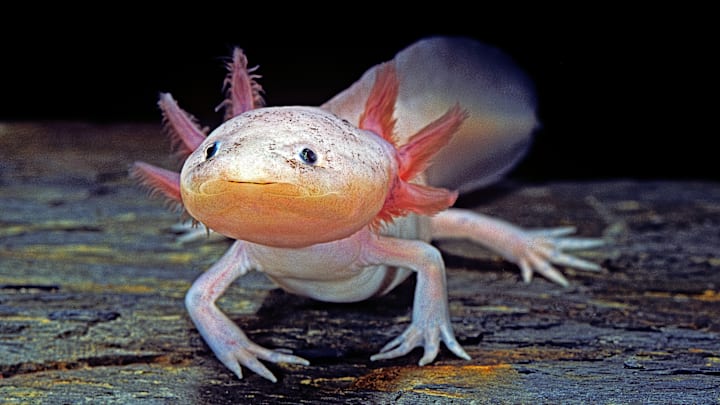Axolotls are everywhere online due to their popularity on TikTok and in Minecraft, but they aren’t very common in the wild. The salamanders are native only to Lake Xochimilco in Xochimilco, Mexico City, and are critically endangered due to habitat loss, pollution, and invasive species. However, scientists believe there’s still hope for the amphibians based on a recent study published in PLOS One.
As The Washington Post reports, researchers in Mexico determined that human-raised axolotls can survive in the wild after they released eight of the amphibians into Lake Xochimilco. The majority of the specimens not only survived, but thrived in their temporary home. These findings suggest that scientists could help boost axolotls’ numbers by reintegrating captive-raised salamanders into their native habitat. Alejandra Ramos, a faculty member of the Autonomous University of Baja California in Mexico City and lead author on the study, tells The Washington Post that many human-raised animals die after they’re released back into the wild. The results of the recent axolotl research are a welcome exception.
And there’s more good news from the study: 10 additional captive-bred axolotls survived in a human-made pond, implying scientists could use artificial wetlands to save the species if Lake Xochimilco becomes unsuitable.
According to the paper, the experts tracked the amphibians using radio transmitters. They recorded information on the axolotls—such as movements, how far they traveled, and how they used their environments—by returning to Xochimilco and the human-made pond a minimum of two times a day over 40 days. When the salamanders were recaptured, the scientists noticed they had gained weight, indicating they had adapted well to their new environments. Unfortunately, birds captured two axolotls in Lake Xochimilco. Scientists are looking into possibly training captive axolotls to avoid predators.
In addition to being adorable, axolotls are essential to the environment. According to Blue Planet Aquarium, the amphibians are a keystone species that maintains the balance among the smaller species in their habitat. And because the salamanders are sensitive to the water quality, temperature, and other factors of its habitat, scientists view them as an indicator species that shows when ecological equilibrium is disrupted.
Read More About the Environment:
